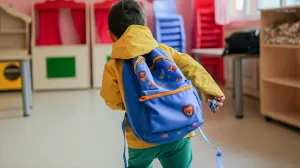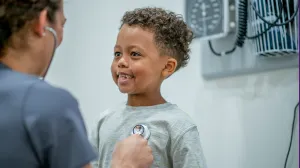An alternative is to throw a Halloween party and invite kids, rather than have them out on the street. If your kids will be going door-to-door trick-or-treating, however, some precautions can make the evening safe and enjoyable for everyone.
Costumes
Safety begins at home, with the child's costume. Every part of the costume—masks, beards, wigs and clothing—should be made of flame-resistant material, according to the Consumer Product Safety Commission (CPSC). In the event that a child bumps up against a burning candle, such materials will quickly extinguish themselves. When purchasing a store-bought costume, look for a label that says "Flame Resistant." Choose costumes without big, loose sleeves, skirts or pant legs to lessen the chance of coming into contact with an open flame.
If the costume is not brightly colored, and therefore not easily visible at night, add a strip of reflective tape, which is sold at hardware and sporting goods stores.
Around the home
To make your home safe and inviting for trick-or-treaters, leave your front lights on so they may have a well-lit path to your door. A well-lit home also reduces your chances of being "tricked" by holiday vandals! Remove items such as planters, hoses and lawn decorations so your visitors don't trip on them. Keep pets inside, out of harm's way.
Place candle-lit jack-o'-lanterns far away from the door, so tiny goblins won't accidentally brush against them. Keep your indoor jack-o'-lanterns away from curtains and any decorations that could catch fire. The CPSC recommends against using candle-lit Halloween luminaries along your walkway; instead, place flashlights inside the bags.
On the streets
Young children should trick-or-treat with an adult or a responsible, older child. Instruct children to stay on the sidewalk and out of the roadway. Remind them to walk, not run, and to go to houses only where they know the people inside. They should avoid unfamiliar houses and lawns, where ornaments, furniture and even tree stumps can cause them to trip. At no time should they enter a house, unless they are with a grown-up.
While driving on Halloween, remember that the night will be filled with excited children who may forget their parents' warnings about street safety. Drive extra carefully, keeping an eye out for youngsters walking between driveways and cars, or crossing in the middle of the block rather than at the corners. Adult Halloween partiers should have a designated driver, of course.
If you are not walking with your children, make sure you know who is with them—and set a time for them to be home. Have them carry a cell phone in case of emergency.
Instruct your kids not to eat any of their goodies until a grown-up has had a chance to carefully examine them.
Make sure the kids eat a healthy meal before trick-or-treating so they'll be less likely to over-indulge on candy.
Tips for costume safety
Follow these costume safety tips from the CPSC:
- Purchase or make costumes that are light and bright enough to be clearly visible to motorists.
- For greater visibility during dusk and darkness, decorate or trim costumes with reflective tape that will glow in the beam of a car's headlights. Bags or sacks should also be light-colored or decorated with reflective tape.
- To easily see and be seen, children should carry flashlights.
- Costumes should be short enough to prevent children from tripping and falling.
- Children should wear well-fitting, sturdy shoes. Mother's high heels are not a good idea for safe walking.
- Hats and scarves should be tied securely to prevent them from slipping over children's eyes.
- Apply a natural mask of cosmetics rather than have a child wear a loose-fitting mask that might restrict breathing or obscure vision. If a mask is used, however, make sure it fits securely and has eyeholes large enough to allow full vision.
- Swords, knives and similar costume accessories should be of soft and flexible material.
Safety tips for pumpkins
Follow these pumpkin safety tips from the CDC:
- Carve pumpkins on stable, flat surfaces with good lighting.
- Have children draw a face on the outside of the pumpkin; parents should do the cutting.
- Place lighted pumpkins away from curtains and other flammable objects.
- Don't leave lighted pumpkins unattended.


